Is SRAM working on a new e-MTB motor with an integrated battery and drivetrain power regeneration?
SRAM patents shed potential details on future e-MTB motor and a regenerative electronic derailleur
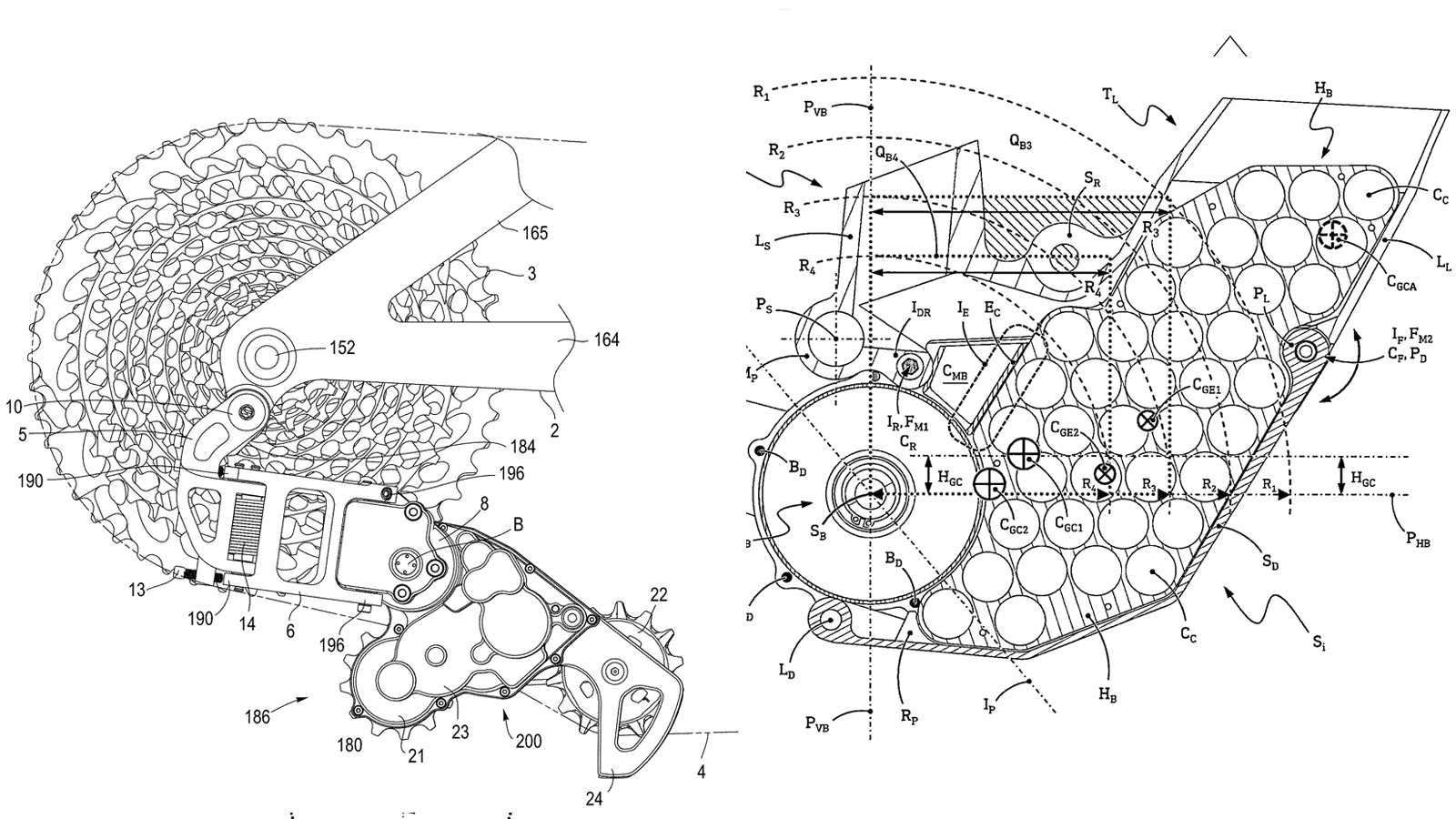
SRAM has filed a number of patents that could confirm that the American drivetrain and component brand is looking to make its debut in the e-MTB motor market. Not only that but there are some interesting patents around a regenerative derailleur system that could make running out of battery on your electronic drivetrain a thing of the past.
Of course, we should caveat that a lot of patents feature tech that never sees the light of day so the findings below should be taken with a pinch of salt.
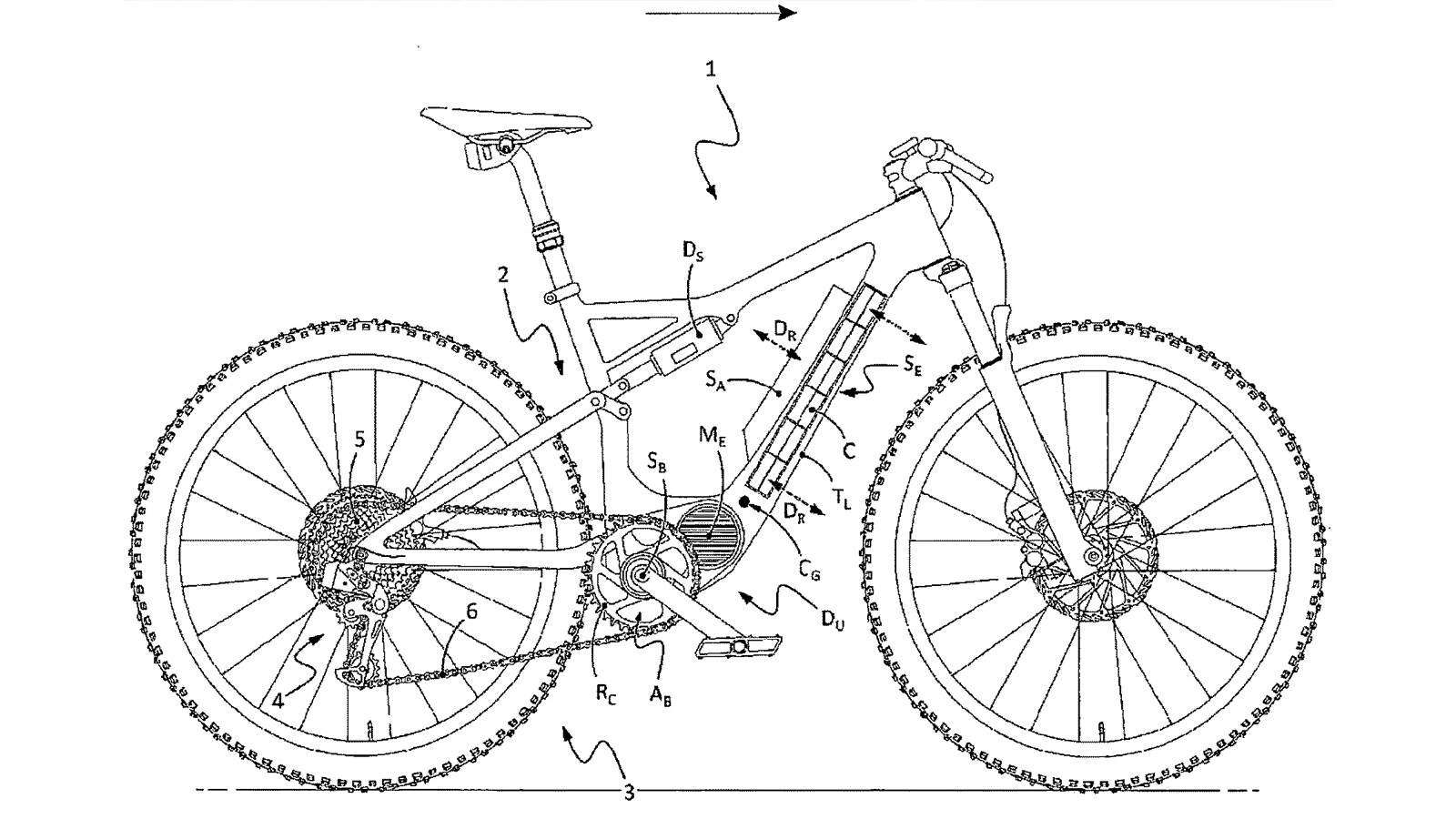
SRAM e-MTB Motor
The e-bike market has seen massive growth and although SRAM are usually ahead of the curve, they are yet to release their own motor. This is particularly surprising as SRAM's main competitor Shimano has been producing its own motors for a while now, launching its first motor back in 2016.
That's not to say there hasn't been plenty of rumors that SRAM is working to equip the best electric mountain bikes with their own motor in the future. In a slew of patents covering a host of motor aspects, it looks as if SRAM a working on developing a motor specifically for e-MTBing.
The patents cover three specific parts of a battery-powered electric motor that's designed specifically for a mountain bike.
The first (DE102022109482A1) appears to be a connector for a downtube-mounted battery, nothing revolutionary there. The details are pretty clear as well, the battery would be removable with access from the underside of the downtube. Again nothing of particular note here other than the drawings being particularly detailed which usually means what's being covered is a good way into development.

The second patent, named 'Electric bicycle drive unit' (US20220332389A1) relates to the motor/battery configuration and has all the interesting details as to what SRAM is working on.
It appears that SRAM is looking to produce a compact harmonic drive unit that is arranged concentrically to the bottom bracket shaft, similar to TQ's HPR 120s. Within the patent, SRAM says the concentric design offers better integration into a bicycle frame when compared to common non-concentric designs. SRAM specifically states that the 140mm TQ motor casing is still too large leading to space conflicts in frames with pivots and short chainstays (especially 470 mm and less), although TQ's smaller HPR50 motor hadn't been announced when SRAM filed the patent.
While none of the diagrams feature dimensions of SRAM's own motor, there is an indication of casing size with the patent stating the motor "should ideally not be more than 100mm". SRAM's patents don't offer any details on the inner workings and what sort of power output we should expect. However, the small form factor leads us to the most interesting part of the patent.
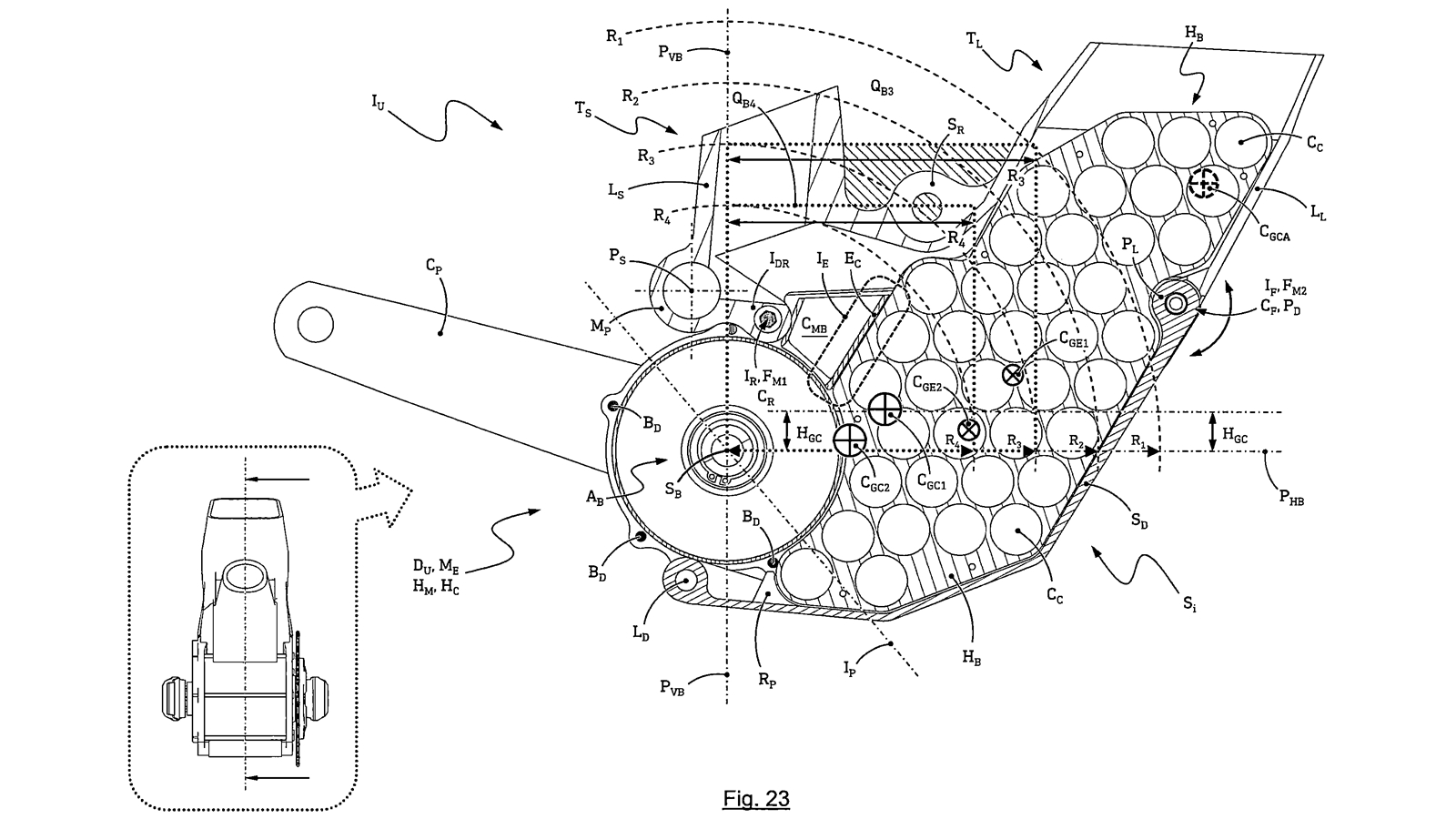
SRAM appears to be developing a motor with an integrated battery attached to the casing. SRAM are very specific as to the reasonings behind this unusual mounting method, lowering the center of gravity. Lowering the center of gravity on a bike improves handling and on e-MTB's the positioning of a battery can greatly affect how a bike handles. Some bikes, like Whyte's E-160 RSX already rotate the non-concentric motor in order to position the battery as low as possible.
SRAM's proposal of mounting a battery to the motor has some potential advantages while harboring a couple of potential disadvantages too. First, as I have already mentioned, a low center of gravity seems to be the central focus of this battery configuration. Using a concentric motor and designing a battery to be mounted directly to it is also a far more efficient use of space. SRAM doesn't offer any details on battery size, however, it does indicate that this motor battery could be used alongside a downtube-mounted battery back. This could potentially give SRAM's motor increased battery capacity and a distinct range advantage over other e-MTBs. The disadvantage is the positioning on the bike as the battery will need some serious armor in order to protect it from potential trail damage. Combining both the motor and battery may also mean cooling is more of an issue as well.
Lastly, the patent shows that the motor-mounted battery would also be removable. Mounted to a 'drive shield' that can be opened allowing the battery to be dropped from the bottom of the bike.
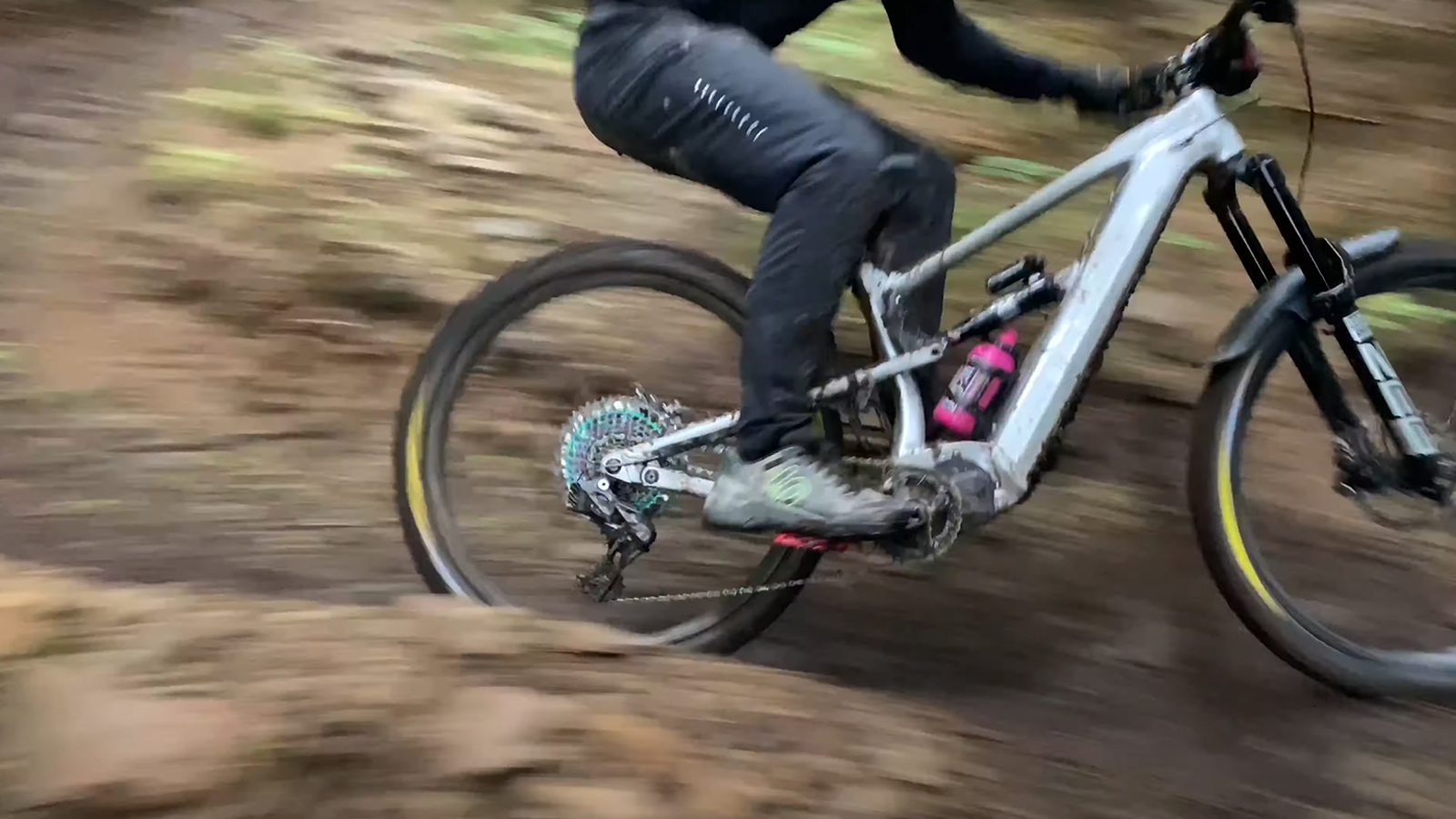
Earlier in the year, a prototype SRAM motor was spotted at the Tweed Valley EWS by the eagle eyes over at Bike Rumour. The drive unit, which was hidden within a casing and fitted to a modified Nukeproof MegaWatt eMTB, had an unusually large form factor. There was some speculation as to what else was stored within the casing and the battery configuration outlined in this patent could be the answer.
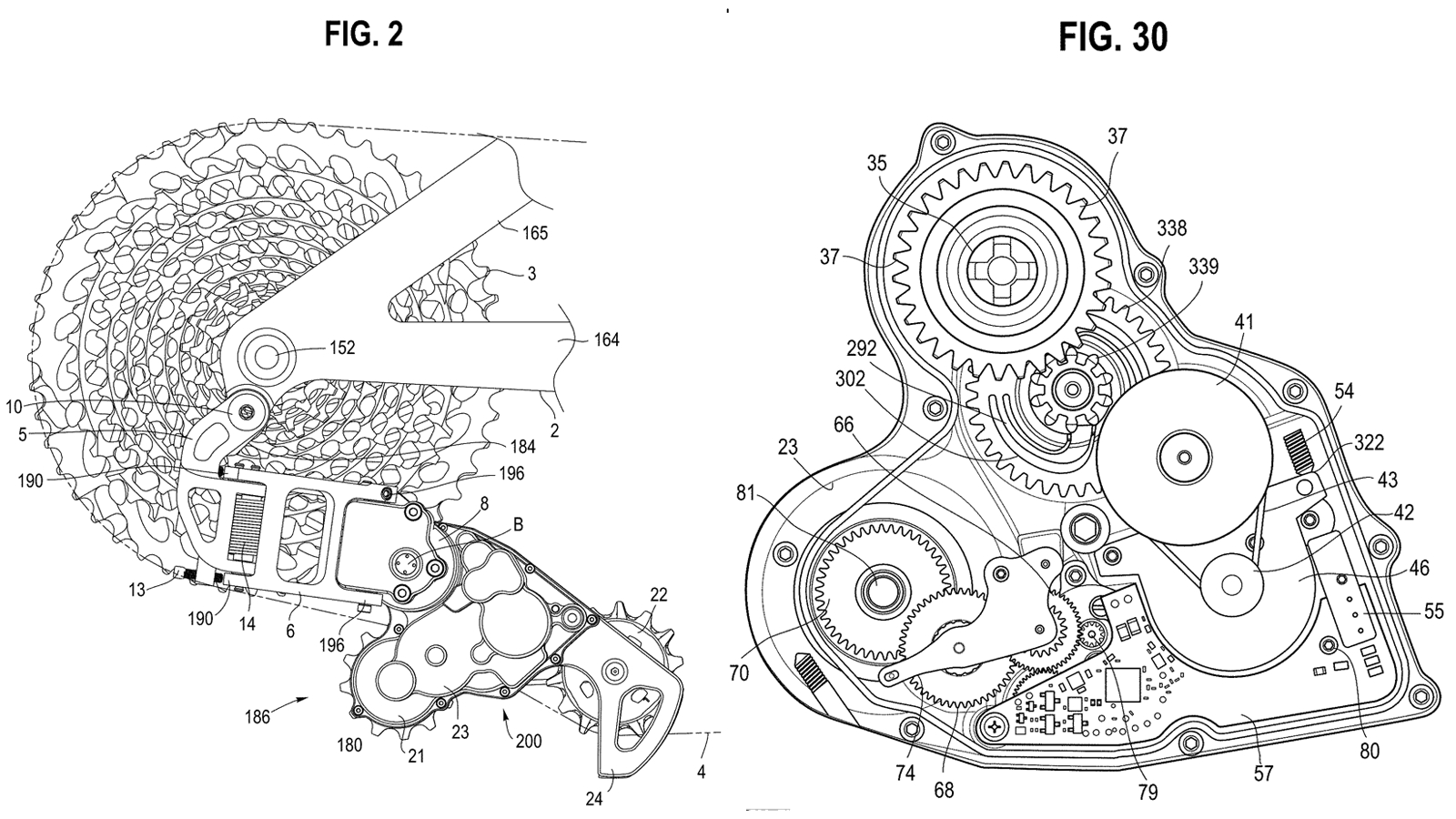
Regenerative bicycle derailleur
In a patent simply titled 'Bicycle derailleur' (US20220355899A1), SRAM outlines some very interesting derailleur tech that could make running out of battery on your electronic drivetrain a thing of the past.
The patent specifically mentions a road bike but based on the diagrams contained within the patent, this tech looks like it could also be used on mountain bikes as the images show a large-range cassette and a diagram of it fitted to a full-suspension mountain bike.
The patent shows two distinctively different designs. The first appears to link the regenerative device to a pivot between the cage and derailleur body (in the same position a clutch would be mounted, to which the cage is mounted and the upper jockey wheel.
A key part of the patent text reads, "The generator drive system may include a chain pulley rotatable about a first rotation axis in opposite first and second rotational directions and a clutch. The clutch may driveably connect the chain pulley and the generator when the chain pulley is rotated in the first rotational direction such that the generator is activated. The clutch disconnects the chain pulley and the generator when the chain pulley is rotated in the second rotational direction such that the generator is deactivated."
The mention of a clutch indicates that this would be aimed at 1x drivetrains commonly used on gravel and mountain bikes. There will also be considerably more movement in the clutch when riding off-road as well, as the derailleur keeps the chain tensioned over rough terrain.
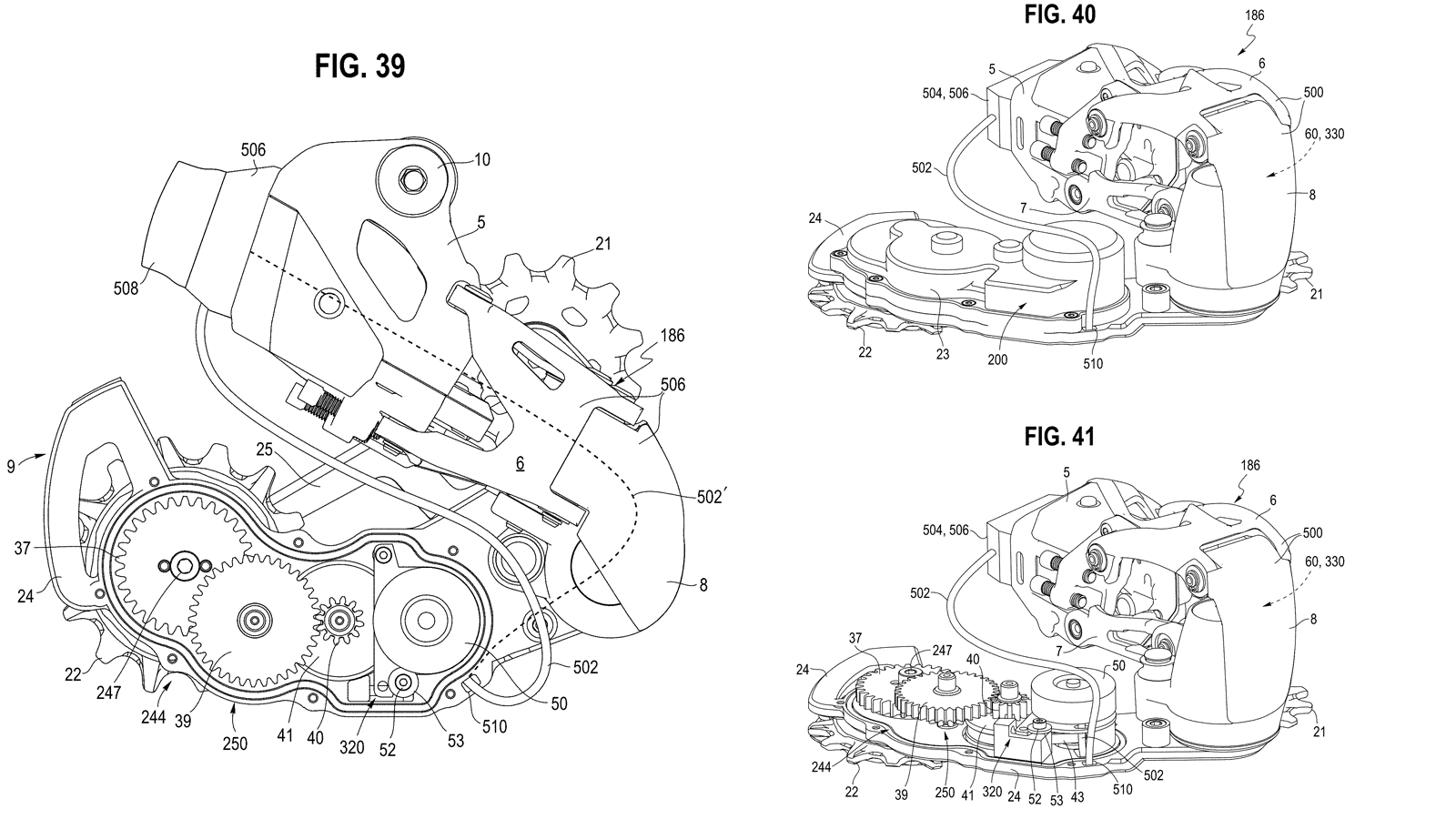
The second shows a more inline setup and has some specific wording that indicates that the power is harvested using the rotation of the jockey wheels, with the images showing both jockey wheels connected to the generator.
"The generator may be mounted to the cage between the upper and lower chain pulleys such that the generator may be driven by either (or both) of the chain pulleys or inputs. The generator drive system may further include a generator transmission operably coupled between the input, e.g., chain pulley or chain pulley and an output, e.g., the generator."
The second design also shows a wire that is connected to a battery mounted on the rear of the derailleur like SRAM's current AXS designs. Whether this system would be energy rich enough to power the derailleur isn't clear although it does indicate battery, a capacitor, or a combination of both.
When will we see this tech on our bikes?
The contents of patents can contain everything from tech that's about to be released to concepts that are one step from an idea scribbled on a napkin. It's impossible to speculate whether the above patents will come to fruition although both seem to show a considerable amount of detail which is usually a sign that there has at least been some development on the concept.
It's probably safe to say that SRAM will release an electric motor in the future and considering the compact size, low weight, and frictionless pedaling advantages of a harmonic motor it's reasonable to expect this will be the route SRAM will go down. Whether we see the integrated battery, only time will tell.
We are less confident that the regenerative bicycle derailleur will come to market, although it's certainly interesting to get a glimpse into SRAM's development process.

Graham Cottingham joined the BikePerfect team as our senior tech writer in 2020. With over 20 years of riding experience, he has dabbled in downhill, enduro, and gravel racing. Not afraid of a challenge, Graham has embraced bikepacking over the last few years and likes nothing more than strapping some bags to his bike and covering big miles to explore Scotland's wildernesses. When he isn’t shredding the gnar in the Tweed Valley, sleeping in bushes, or tinkering with bikes, he is writing tech reviews for BikePerfect.
Rides: Cotic SolarisMax, Stooge MK4, 24 Bicycles Le Toy 3, Surly Steamroller
Height: 177cm
Weight: 71kg
